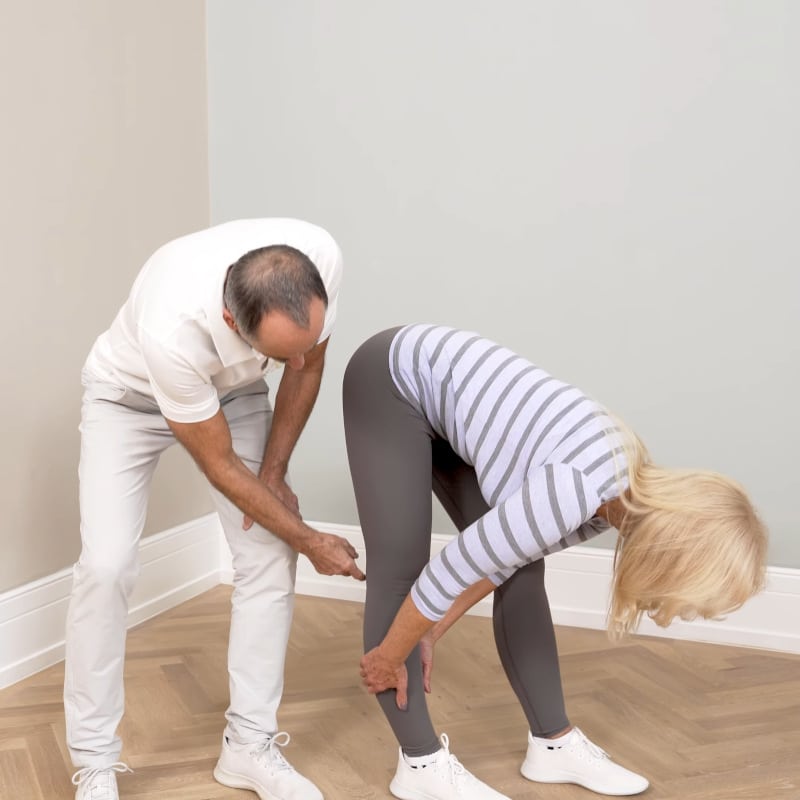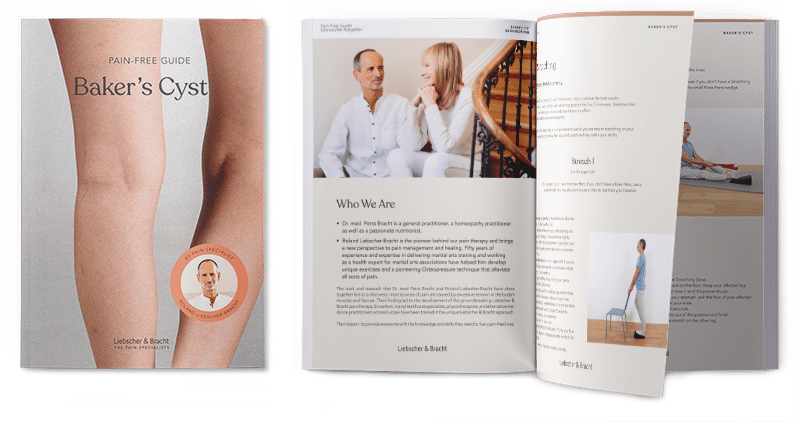Baker’s Cyst
Baker’s Cyst Exercises (popliteal Cyst)
Body Part:
Knee
Equipment:
Knee Hero
Level:
Beginner
Baker’s Cyst
Body Part:
Knee
Equipment:
Knee Hero
Level:
Beginner
If you’re experiencing tightness or pain at the back of your knee because of a Baker’s cyst, this 4-minute stretching routine may help relieve your discomfort. You’ll need our Knee Hero or a stack of books to perform our Baker’s cyst exercises. If you’d like to start stretching, jump to our routine. Keep reading if you’d like to learn more about Baker’s cyst.
What is a Baker’s Cyst?
A Baker’s cyst is a fluid-filled bump that forms on the back of the knee. The condition is also known as popliteal cysts, synovial cysts, and parameniscal cysts. In most cases, a Baker’s cyst is no cause for worry. The condition is very common, but it rarely causes serious complications.1)
How Does a Baker’s Cyst Develop?
Our knees are the largest, most complex joints in our bodies. These weight-bearing hinge joints are involved in almost all of our daily movement. Our body produces synovial fluid to help the joints move easily. This thick liquid flows through the crevices of the knee joints, keeping them lubricated. Developing arthritis, tearing a meniscus, or injuring your knee can cause excess production of synovial fluid. As pressure builds, synovial fluid is pushed to the back of the knee, forming a cyst.
What Causes a Baker’s Cyst?
Most commonly, a Baker’s cyst develops with another condition or because of an injury to the knee joint. 2) If you’ve developed a Baker’s cyst, you may have:
Symptoms of a Baker’s Cyst Are:
In some cases, you may have no symptoms.
You can buy your Knee Hero in our online shop. While you’re there, take a look around. We’ve got lots of pain-relieving tools and products waiting to be added to your cart.
Take me to the shop.To maximize the benefits of our Baker’s Cyst exercises, stretch intensely and intelligently. Challenge yourself to stretch at a high intensity that may produce an uncomfortable sensation. (This is a sign that the stretch is working.) Do not, however, stretch to the point that your breaths become short and shallow or you find that you’re holding your breath or clenching your teeth.


For the second part of this stretch, you’ll need our Knee Hero or a stack of books. Stack your Knee Hero with the large and small wedge, so it’s at a 27° angle.
Perform our stretching routine 6 days a week until the tension and pain at the back of your knee go away.
Download our FREE PDF guide and start relieving your knee pain now.

Knee bursitis develops when one of the bursae surrounding the knee becomes inflamed. Our stretching routine can help alleviate your pain and reduce the swelling.
Relieve Knee Bursitis PainAlthough it’s more common to experience pain at the front of the knee (patelllofmoral pain syndrome), it can occur at the back. This 4-minute exercise routine was designed specifically to target the back of your knee.
Try NowDiscover the causes and symptoms of knee pain, learn about common conditions, and find out what helps knee pain — and what doesn’t. Plus, more exercises you can do at home.
Become a Knee Pain Expert Now